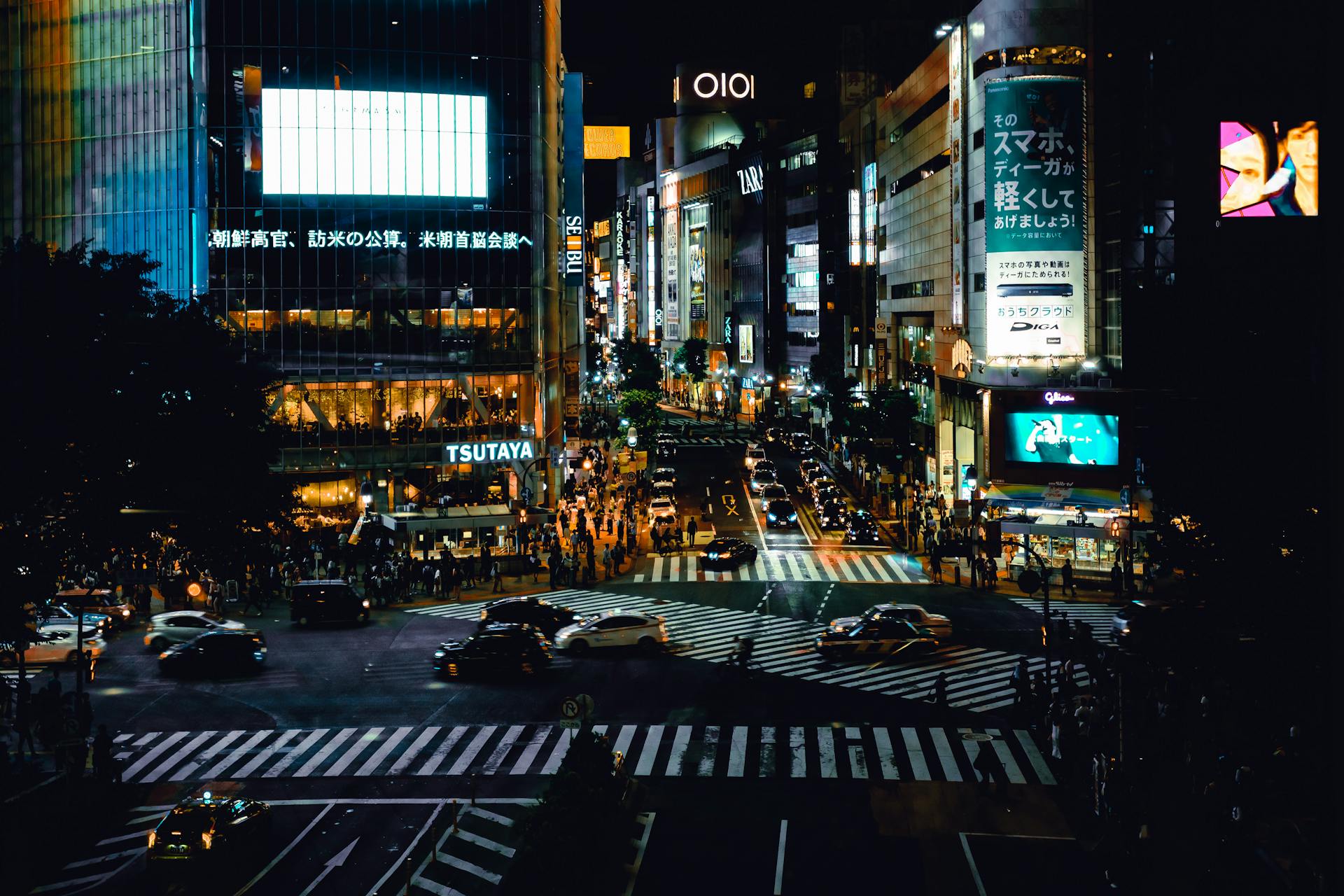
A blind intersection is an intersection where drivers cannot see oncoming traffic due to obstructions such as buildings, trees, or hills. Blind intersections are dangerous because drivers may not see oncoming traffic until it is too late to avoid a collision. Collisions at blind intersections can often be severe because the drivers involved are not expecting to see each other.
There are several ways to make blind intersections safer. One way is to install traffic signals or stop signs. This will force drivers to slow down and look for oncoming traffic before proceeding. Another way to make blind intersections safer is to install reflectors or paint the crosswalks in bright colors. This will make the intersection more visible to drivers and help them to see oncoming traffic.
Blind intersections are a hazard on our roads, but there are steps that can be taken to make them safer. Drivers need to be aware of the dangers of these intersections and take extra care when approaching them. By following these safety measures, we can help to reduce the number of collisions at blind intersections.
Here's an interesting read: Expressways Safer
How can you stay safe at a blind intersection?
Blind intersections are intersections where motorists cannot see oncoming traffic due to obstruction. Motorists must use extra caution when approaching and crossing through a blind intersection.
There are several steps motorists can take to stay safe at blind intersections:
1. Slow down and be prepared to stop. When approaching a blind intersection, motorists should slow down and be prepared to stop. This will give you more time to react if a vehicle suddenly appears.
2. Come to a complete stop before entering the intersection. Never try to "beat" a car by crossing the intersection quickly. This puts you at risk of being hit by oncoming traffic.
3. Look both ways before proceeding. Once you've stopped, take a moment to look in both directions for oncoming traffic. Use your side mirrors and listen for approaching vehicles.
4. Yield to oncoming traffic. If you see or hear a vehicle approaching, yield the right-of-way. Let the other vehicle pass through the intersection before proceeding.
5. Use caution when entering the intersection. Even if you don't see any oncoming traffic, use caution when entering the intersection. Remember that not all vehicles are visible from your vantage point.
By following these simple tips, you can help ensure your safety at blind intersections. Remember to always use caution and be prepared to stop. Never try to "beat" a car by crossing the intersection quickly.
For another approach, see: When I Remember What You've Done for Me?
What are some tips for driving at a blind intersection?
Some tips for driving at a blind intersection are to always use your turn signal, to come to a complete stop before proceeding, to yield to any pedestrians or oncoming traffic, and to be extra cautious when making a turn. When approaching a blind intersection, be sure to slow down and be prepared to stop. Always use your turn signal to indicate your intention to turn, even if there are no other cars around. Come to a complete stop before proceeding, and check for oncoming traffic or pedestrians before proceeding. Yield to any oncoming traffic or pedestrians, even if you have the right of way. Be extra cautious when making a turn, as it can be difficult to see oncoming traffic. If you are unsure about the safety of the turn, it is best to err on the side of caution and not make the turn.
Intriguing read: Pronounce Cautious
How can you stay aware of your surroundings at a blind intersection?
Assuming you are talking about a four-way stop at a completely blind intersection (i.e. no stop signs or any other form of markings), the key to staying aware of your surroundings is to use extra caution when approaching and crossing the intersection. Here are some specific tips:
- Slow down well before you reach the intersection so that you have plenty of time to stop if necessary.
- Listen for any approaching traffic - if you hear a car coming, do not proceed into the intersection until it has passed.
- If there is any pedestrians crossing, wait for them to finish before proceeding.
- Once you have stopped at the intersection, take a few moments to look in all directions to see if there is any oncoming traffic. If everything is clear, then proceed with caution.
By following these simple tips, you can stay aware of your surroundings and avoid any potential accidents at a blind intersection.
A different take: Can You Use Bleach on Your Areola?
What are some things to look out for when approaching a blind intersection?
There are a few things to look out for when approaching a blind intersection. First, you will want to yield to oncoming traffic. second, be aware of any pedestrians that may be crossing the street. Finally, use caution when proceeding through the intersection.
Intriguing read: The Intersection of MIS and Finance
What are some things to avoid doing at a blind intersection?
When stopped at a blind intersection, be especially careful before proceeding. To avoid an accident, avoid doing the following:
- don't try to outrun a yellow light - it could turn red before you reach the intersection - don't assume that you have the right-of-way because you arrived first - don't speed up to make it through a yellow light - don't tailgate the car in front of you - don't honk your horn excessively - be aware of pedestrians who may be crossing the street, even if they are not in a designated crosswalk
Related reading: What Is Friction?
What should you do if you find yourself in a blind intersection?
If you find yourself in a blind intersection, the best thing to do is to stop and listen. You may be able to hear traffic coming from one or more of the directions. If you cannot hear any traffic, you should wait a few moments to see if any cars come into view. If you still do not see any cars, you should slowly inch your way forward until you can see around the corner. Once you can see around the corner, proceed with caution.
Discover more: What Are the Best Places to Elope in California?
What are some common mistakes people make at blind intersections?
One of the most common mistakes that drivers make at blind intersections is assuming that oncoming traffic will yield the right-of-way. This can lead to serious accidents, especially if the driver misjudges the speed of the oncoming traffic. Another common mistake is failing to use turn signals when turning. This can also confuse other drivers and lead to accidents. It is always important to use caution when approaching a blind intersection and to be aware of the potential dangers.
How can you prevent accidents at blind intersections?
There are a few things drivers can do to help prevent accidents at blind intersections.
First, it is important to be aware of the potential for accidents at these types of intersections. When approaching a blind intersection, drivers should be prepared to stop or yield the right-of-way if necessary.
Second, drivers should use extra caution when driving through a blind intersection. They should be sure to look for pedestrians and oncoming traffic before proceeding.
Third, drivers should be prepared to stop suddenly if necessary. If a car suddenly appears in the intersection, the driver may need to stop to avoid an accident.
Fourth, drivers should avoid driving through a blind intersection if they can. If possible, they should take an alternate route.
By following these simple tips, drivers can help prevent accidents at blind intersections.
For your interest: Are Gutters Necessary in Texas?
Frequently Asked Questions
What should I do if I see a blind person cross the street?
The best thing to do if you see a blind person crossing the street is to stop and wait for them to cross in front of you. If the person is already across the street, let them know where you are going so that they can find their way back.
What should you do at an intersection without a stop sign?
At an intersection without a stop sign, slow down and be ready to stop. Yield to traffic and pedestrians already in the intersection or just entering the intersection. Also, yield to the vehicle or bicycle that arrives first, or to the vehicle or bicycle on your right if it reaches the intersection at the same time as you.
What is considered a blind intersection in California?
A blind intersection is one in which there are no stop signs at any corner, and you cannot see for 100 feet in either direction during the last 100 feet before crossing.
How do blind people know where to stop at an intersection?
Blind people learn to identify different sounds that help them know when they are close to an intersection. For example, a dog may be heard when walking down a street, and this can help someone locate the street sign or crosswalk. Certain types of pavement markings, such as rumble strips, can also indicate the presence of a stoplight or other traffic markings.
Who is the director of blind intersections?
Lara Saba is the director of blind intersections.
Sources
- https://www.thedenverinjurylawfirm.com/blog/2020/07/what-is-a-blind-intersection/
- https://www.dmv-written-test.com/question/motorcycle/when-approaching-a-blind-intersection-riders-should_b2XlEerY.html
- https://www.bbc.com/news/magazine-18442581
- https://www.linguee.fr/anglais-francais/traduction/stay+aware+of+your+surroundings.html
- https://quizlet.com/479836088/blind-intersection-flash-cards/
- https://automobtips.com/do-you-stop-at-a-blind-intersection/
- https://automobtips.com/what-is-the-speed-limit-for-a-blind-intersection/
- https://en.wikipedia.org/wiki/Blind_Intersections
- https://www.answers.com/Q/What_is_a_blind_intersection
- https://www.huffpost.com/entry/situational-awareness-a-k_b_4846700
- https://profound-answers.com/do-you-stop-twice-at-a-blind-intersection/
- https://www.bestonlinetrafficschool.co/blind-intersection/
- https://www.dmv-written-test.com/question/motorcycle/when-approaching-a-blind-intersection-you-should_KzP7Znr6.html
- https://chicagolighthouse.org/sandys-view/crossing-the-street/
Featured Images: pexels.com


